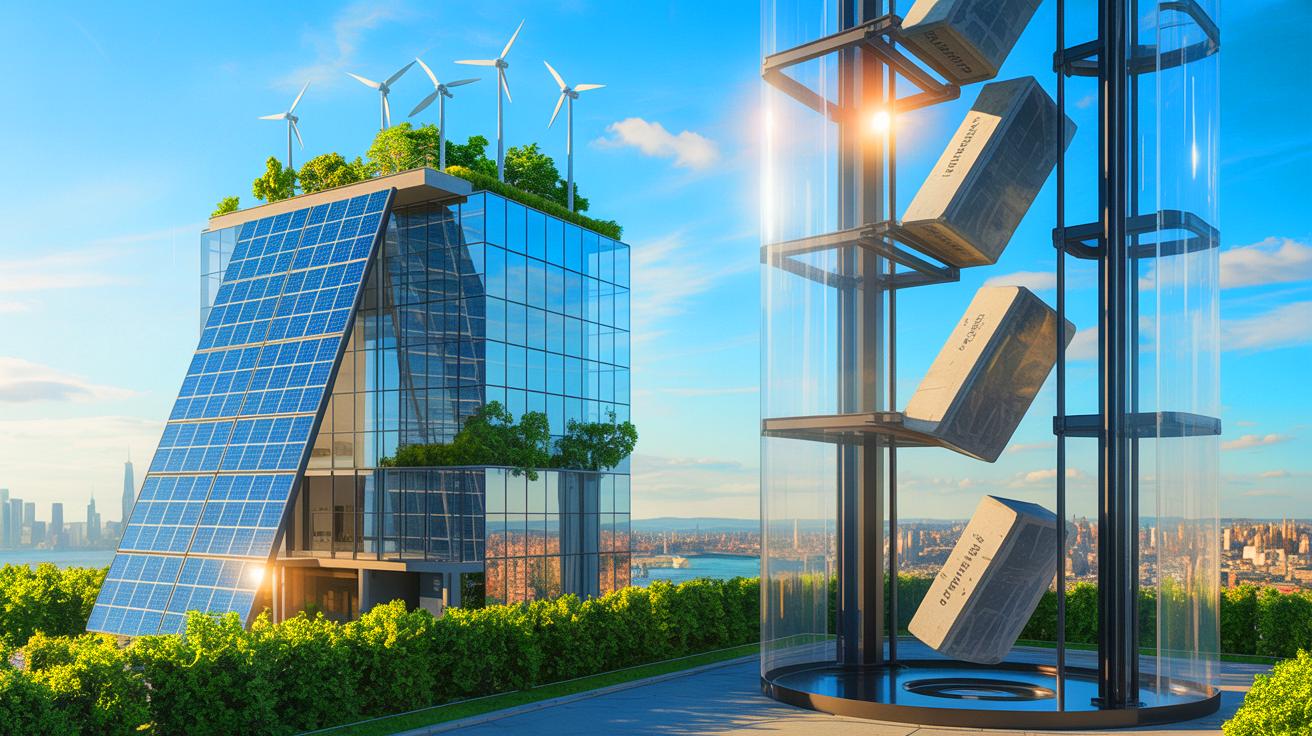Key Takeaways
- University of Waterloo researchers have developed a gravity-based energy storage system for skyscrapers, integrating PV facades and rooftop wind turbines.
- The system aims to enhance energy efficiency and reduce costs while minimizing grid dependency through advanced optimization techniques.
- Tall buildings with larger floor areas are essential for achieving lower energy costs and greater energy resilience.
Innovative Energy Storage System for Skyscrapers
Researchers at the University of Waterloo have unveiled a pioneering gravity-based energy storage system suitable for high-rise buildings. This innovative technology connects photovoltaic (PV) facades and small rooftop wind turbines to harness renewable energy. By employing a gravity mechanism, skyscrapers can act as efficient power storage units, thereby diminishing reliance on the electrical grid while maximizing the use of renewable resources. This solution not only promotes sustainability but also offers a cost-effective means to meet urban energy demands.
The gravity-based energy storage system operates by using gravitational potential to improve the efficiency of renewable energy in tall structures. Key components include a motor-generator unit, hoisting ropes, transmission gears, and a significant mass—typically steel or concrete— that is elevated in a vertical shaft. When excess electricity is available, the mass ascends, storing energy. During energy shortages, the mass descends, generating electricity as it moves through a connected generator.
Researchers emphasize that the system employs PV facades on the south, east, and west walls of buildings, combined with wind turbines atop rooftops. The gravity mechanism serves as the primary storage unit, while lithium-ion batteries provide rapid storage responses during energy production fluctuations.
Optimizing Energy Efficiency in Building Designs
Using a multi-objective optimization framework, the system strives to minimize the levelized cost of electricity (LCOE) and grid dependency (GD). With a comprehensive analysis across 625 design parameters—including energy use intensity (EUI) and geometric configurations—this optimization can lead to significant gains in energy efficiency and sustainability.
The system achieved LCOE values between $0.051 and $0.111 per kWh and GD values from 0.195 to 0.888. These metrics are competitive with, or even superior to, those of existing renewable energy systems, underscoring the potential for these designs in resource-limited urban settings.
The Role of Tall Buildings in Energy Management
Tall buildings with larger floor areas are crucial for attaining lower LCOE values, although they often display higher GD. The effectiveness of gravity storage (GS) increases alongside higher EUI, indicating its importance for system autonomy. Findings reveal an inversely proportional relationship between GD and GS capacity, highlighting the need for optimizing GS for greater building resilience.
Future research may delve into factors such as demand variability and weather conditions, as well as integrating thermal loads and cogeneration systems. Moreover, advanced control methods could further enhance system efficiency and adaptability.
Further Research and Challenges Ahead
Although the current system shows promise, further studies are needed to evaluate its feasibility in varying climates. Conducting comprehensive life cycle assessments will help clarify its overall benefits and limitations. Integrating shared GS systems across multiple buildings could lead to improved urban energy solutions.
As urban areas expand, the quest for sustainable energy solutions is crucial. This gravity-based energy storage system represents a significant move towards reducing dependence on conventional power sources, although challenges related to climate variation and building technology need to be addressed for optimal advancement.
The content above is a summary. For more details, see the source article.















